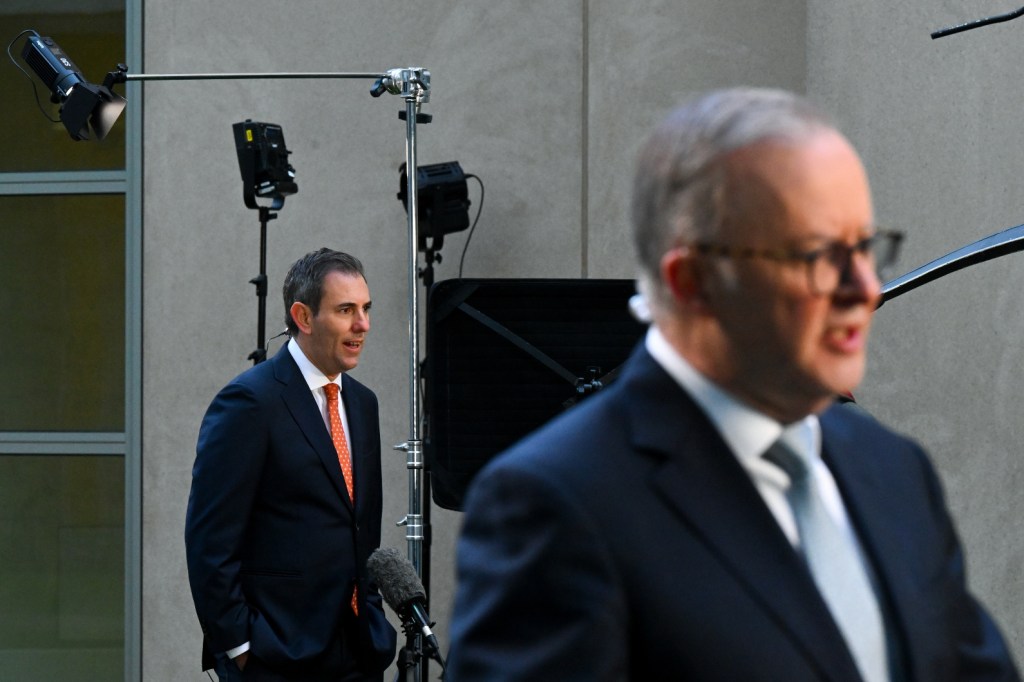
The days of Australian consumers, businesses and government being able to write, cash or deposit cheques are officially numbered, with the Albanese government finally giving into bank pressure to eliminate the signature-propelled pieces of paper in their entirety by 2030.
The Treasury on Friday revealed it intends to allow banks to dump their institutional cheque issuance facilities (bank cheques) by 2025, with the government to follow in 2026 and personal cheques scrapped in 2026. Acceptance completely ceases and the cheque system closes in 2030.
The Treasurer outlined his intention to kill off cheques in June, but the Treasury paper released on Friday formalises the process and paves the way for legislation to be drafted.
It’s a move the banking industry has been lobbying the government to make for more than two decades because, as the use of cheques declines, the cost of maintaining the infrastructure increases.
Also revealed in June was the government’s intention to shutter the Bulk Electronic Clearing System (BECS), over which account-to-account direct debit and deposit transactions run, with a timeline for the shutdown supposedly being settled by the end of this year.
An announcement could be made today.
Banks are broadly less happy about being required to support the move away from BECS because it means considerably more expenditure on infrastructure without much of a follow-through to profit margin of efficiency.
Like cheques, governments and revenue agencies are a key market segment for BECS, especially around bills, fines, levies, licencing and taxes.
And despite the onslaught of technology, cheques remain remarkably useful when cash or electronic payment facilities are unavailable or untenable.
Real estate is the biggy in terms of consumer transactions — think the deposit on a just-sold house or flat — but there are also routinely cheques cut for transactions between businesses and between consumers, business and government.
For people who need to transact where banks may not be available, like farmers or remote and regional businesses, cheques remain a remarkably safe and simple way to pay bill and accounts when online or electronic transactions may not be an option.
For an insurance assessor in the field, the ability and discretion to cut a cheque on the spot to allow people hit by fires, floods or severe weather can make a massive difference to people getting back on their feet.
According to the Reserve Bank of Australia and Treasury’s latest consultation paper on cheques, cheque usage as a cash substitute has imploded since the 1980s when “cheque use accounted for approximately 85 per cent of all non-cash payments and almost all their value.”
That would have stayed the case until around 1984, when Australia introduced the EFTPOS real-time electronic payments network, a world-leading, low cost and highly secure platform that also provided rails for automatic teller transactions, like cash withdrawals and deposits.
Even then cheques hung around — Australian card payment terminals still feature the three-way choice of savings, cheque or credit to select from.
The reason the cheque facility is on an electronic payment terminal at all is that banks make good money from interest and fees on credit products like mortgages, overdrafts and lines of credit.
If you’re hitting the cheque button at the ATM, you’re almost certain to have a mortgage.
“In 2022, there were nearly 27 million cheques transacted (down by 18.2 per cent from 2021) with a value of $317 billion (down by 14.5 per cent from 2021),” Treasury said using RBA statistics.
“As the volume of cheques has declined, the per-transaction cost of processing a cheque has increased, with the average cost of processing a cheque now exceeding $5.”
That’s actually pretty cheap if you consider that a lot of cheques are cut for amounts of more than $100,000. Indeed, a $5 fee levied on the depositor of a $100,000 cheque is just half a basis point (bpt), or 0.5% of a full percentage point. When banks increase interest rates they typically do it in 25 bpt or 50 bpt hits.
Compare that to the $3 levied on ATM withdrawals.
Banks issuing bank cheques do very nicely out of them too, thank you very much. Getting a bank cheque cut sets a consumer back at least $15.
But there is a pretty big unknown in the whole equation. Bank cheques fill a highly sensitive niche for higher-value transactions like a house deposit, a car sale or other substantial purchases where the two transactors may not know each other or even transact again.
Cheques are also pretty useless to scammers unless they are running an actual sham company to whom the cheque is made out to, and that involves a lot more bother than just hijacking an account and sending a few million spam messages.
What we do know is that bank cheques will bite the dust before the BECS system is migrated across to the New Payments Platform at a date yet to be made public.
At a time when critical infrastructure resilience is top of the government’s mind, and the removal of single points of failure is becoming almost mandatory, there seem to be a lot of eggs going into one particular basket.
Just as importantly, who will the last bank cheque ever cut be made out to, and what will it be for?
And what will charities use instead of giant novelty cheques?
READ MORE:

